Oil Painting in Italy: Antonello da Messina
I really love the Philadelphia Museum of Art, especially the monastery-like room in which I saw this painting displayed. I also really like getting the side-eye from this guy, because this artist is one of my favorites in the Italian Renaissance. The reason he is one of my favorites is because he was influenced by northern European painting (shut up, I know I’m Swiss, what does that have to do with it?). While most art historians consider the Italian Renaissance the epitome of culture, and the major influence on art all over Western Europe, I feel we should look at Northern influences on Italian Renaissance art.
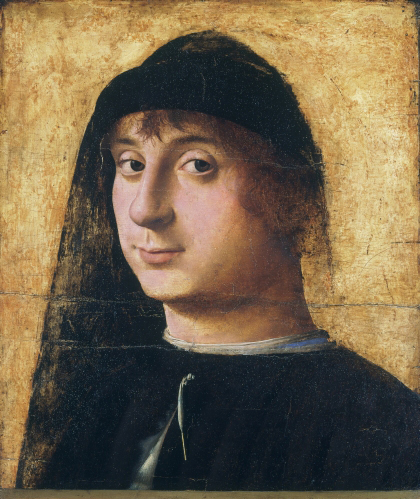 |
| Antonello da Messina (ca. 1430–1479, Italy), Portrait of a Young Man, 1465–1475. Oil on wood, 12 1/4" x 10 5/8" (31 x 27 cm). © Philadelphia Museum of Art. (PMA-444) |
Until the late 1400s in Italy, tempera was the preferred painting medium. Oil paintinghad become the preferred painting medium in northern Europe—specifically Flanders—in the early 1400s. Also, during that time, the three-quarters portrait became popular in northern Europe, as opposed to the profile portrait that remained popular in Italy through the middle of the 1400s. By the late 1400s, the three-quarters view portrait was universally popular in Italy. What’s interesting about this change in format in the portrait eloquently expresses the Renaissance belief in the uniqueness of every human being.
This sitter engages the viewer with his eyes in almost a defiant manner. Such self-assurance is typical of the Renaissance revival of antique learning, such as the teachings of the Greek philosopher Plato (425—347 bce) who advised people to “know yourself.” By many art historians, Antonello da Messina is considered one of the finest Italian Renaissance portraitists who achieved a psychological depth in his portraits. This portrait originally had a dark (probably black, cleaned off?) background that helped focus attention of the sitter’s face.
Antonello was born in Messina and died in Venice. He worked in Sicily for several years and then went to Naples, where it is thought that he saw an oil painting by the Flemish master Jan van Eyck (ca. 1390–1441). It is also possible that he saw the work of another Flemish master, Rogier van der Weyden (died 1464), who visited Italy around 1450. That Antonello was influenced by the Flemish oil technique is evident in his work, and he may have transmitted the medium to other artists, especially those in Venice where he moved in 1473. Venetian artists were among the first Italian artists to adopt the oil medium in their painting.
Typical portraiture of the period in Italy:
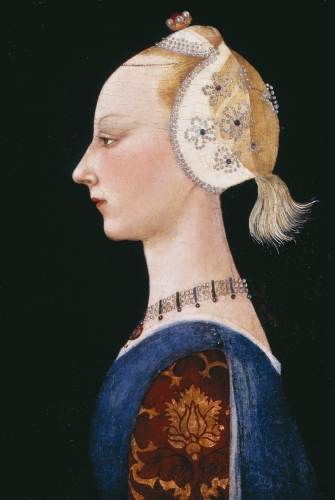 |
| Paolo Uccello, attributed to (1397–1475), A Young Lady of Fashion, 1460s. © Isabella Stewart Gardner Museum, Boston. (GM-46) |
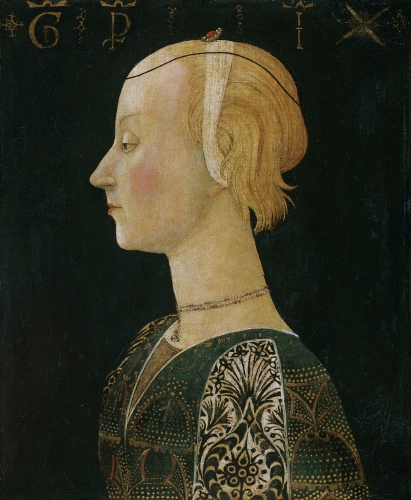 |
| Scheggia (Giovanni di Ser Giovanni di Mone Cassai) (1406–1486), Portrait of a Lady, ca. 1440–1450. © Philadelphia Museum of Art. (PMA-3257). |
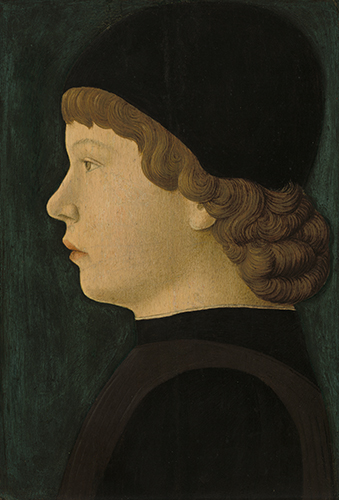 |
| Unknown Artist, Profile Portrait of a Boy, from northern Italy, ca. 1460/1470. © National Gallery of Art, Washington, DC. (NGA-P0955) |
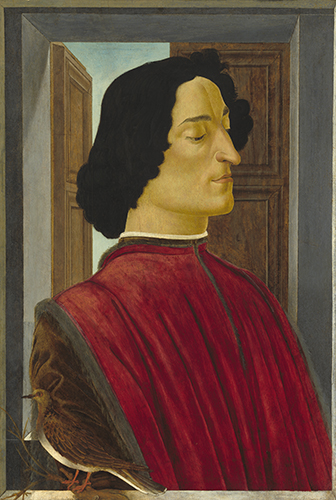 |
| Botticelli (Alessandro di Mariano Filipepi) (1444/1445–1510), Giuliano de’ Medici, ca. 1478. © National Gallery of Art, Washington, DC. (NGA-P0056) |
Activity: Create a self-portrait or portrait of a friend in a Renaissance setting or costume. Start painting with light colors then work toward darker shades to produce shadows. Create highlights with tints (colors mixed with white). Try to reflect a specific period by the costume, objects, or background. Use a fine-tipped brush for details. Compare the portrait to Renaissance portraits from museums and how the time difference affects the result.
Correlations to Davis programs: Explorations in Art Grade 1: 2.8; Explorations in Art Grade 2: 2.8; Explorations in Art Grade 3:.1, 1.2; Explorations in Art Grade 4: 2.7; Explorations in Art Grade 5: 1.2; Explorations in Art Grade 6: 1.1, 1.2; A Personal Journey: 3.2, 6.4; A Global Pursuit: 4.4; Exploring Visual Design: 7, 10; The Visual Experience: 15.8; Discovering Art History: 9.1


Comments